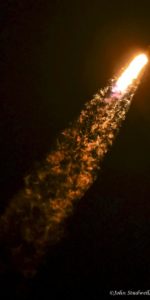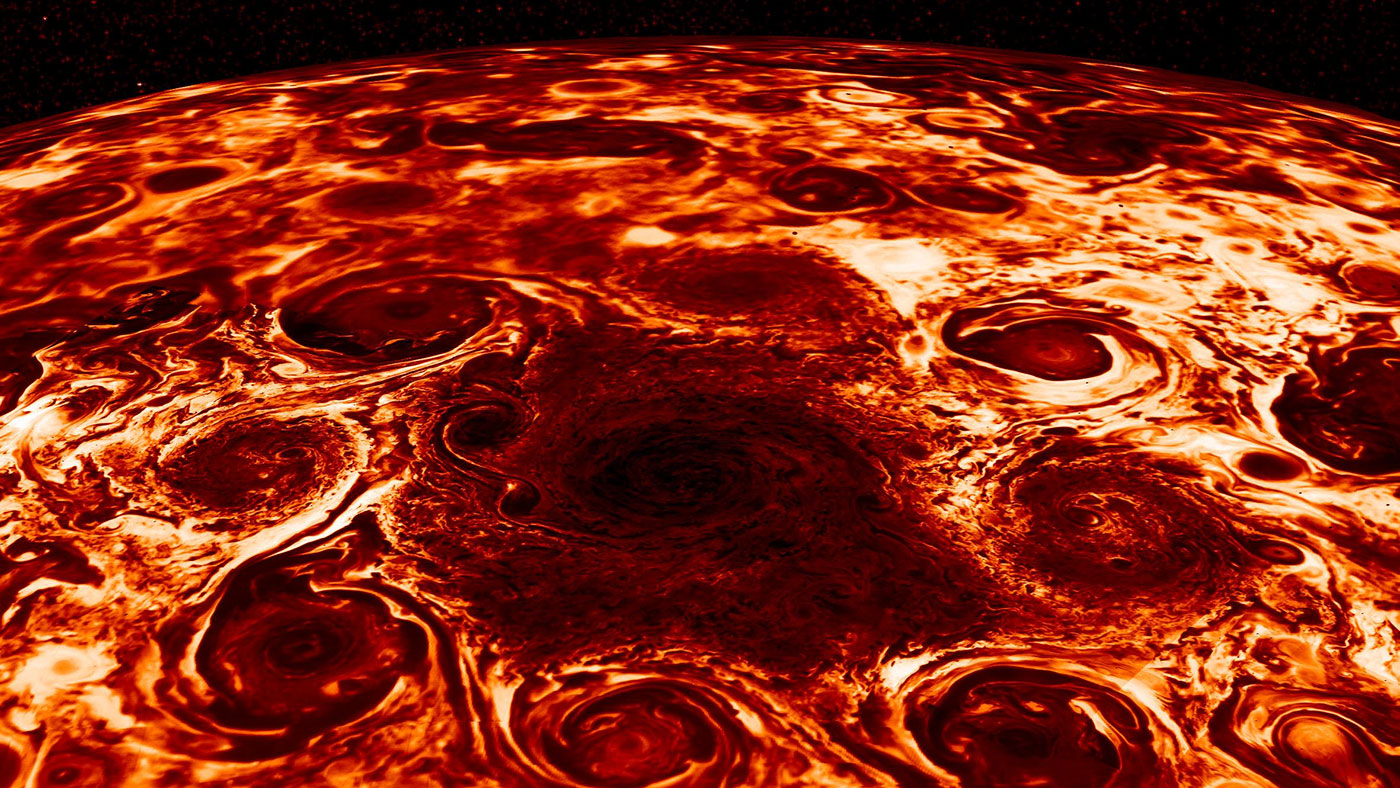
As previously discussed on AmericaSpace, the Juno spacecraft has found that the giant planet Jupiter is full of big surprises; its interior composition and structure seem to be quite different, and its winds even more active, than originally thought. Now, giant cyclones at the planet’s poles have been seen in greater detail than ever before – they are not only stunning, but unique from atmospheric storms of any other planet in the Solar System, even other gas and ice giants. Also, other new data from Juno builds on previous findings, including showing that the planet’s strong winds penetrate deep into the atmosphere and last longer than any similar ones on our planet.
“These astonishing science results are yet another example of Jupiter’s curve balls, and a testimony to the value of exploring the unknown from a new perspective with next-generation instruments. Juno’s unique orbit and evolutionary high-precision radio science and infrared technologies enabled these paradigm-shifting discoveries,” said Scott Bolton, principal investigator of Juno from the Southwest Research Institute, San Antonio. “Juno is only about one-third the way through its primary mission, and already we are seeing the beginnings of a new Jupiter.”
The new findings will be published in the March 8 edition of the journal Nature.
Since astronomers first started using telescopes, it could be seen that Jupiter seemed to be an active world, with its well-known colorful atmospheric belts, and of course the Great Red Spot. Thanks to probes like Voyager, Galileo and now Juno, we can see these phenomena in much greater detail than ever before. The atmospheric belts are incredibly turbulent, with jet streams and storms far more powerful than any on Earth.
Jupiter’s atmospheric marvels are not limited to its equatorial regions however; Juno has provided unprecedented views of the planet’s poles, where massive cyclones churn with unearthly ferocity. Infrared mages created from data taken by the Jovian Infrared Auroral Mapper (JIRAM) instrument look almost surreal, like cosmic artwork. The clusters of cyclones around the poles look kind of like a “space pizza” – a dazzling, yet unearthly sight.
“Prior to Juno we did not know what the weather was like near Jupiter’s poles. Now, we have been able to observe the polar weather up-close every two months,” said Alberto Adriani, Juno co-investigator from the Institute for Space Astrophysics and Planetology, Rome, and lead author of the paper. “Each one of the northern cyclones is almost as wide as the distance between Naples, Italy and New York City – and the southern ones are even larger than that. They have very violent winds, reaching, in some cases, speeds as great as 220 mph (350 kph). Finally, and perhaps most remarkably, they are very close together and enduring. There is nothing else like it that we know of in the Solar System.”
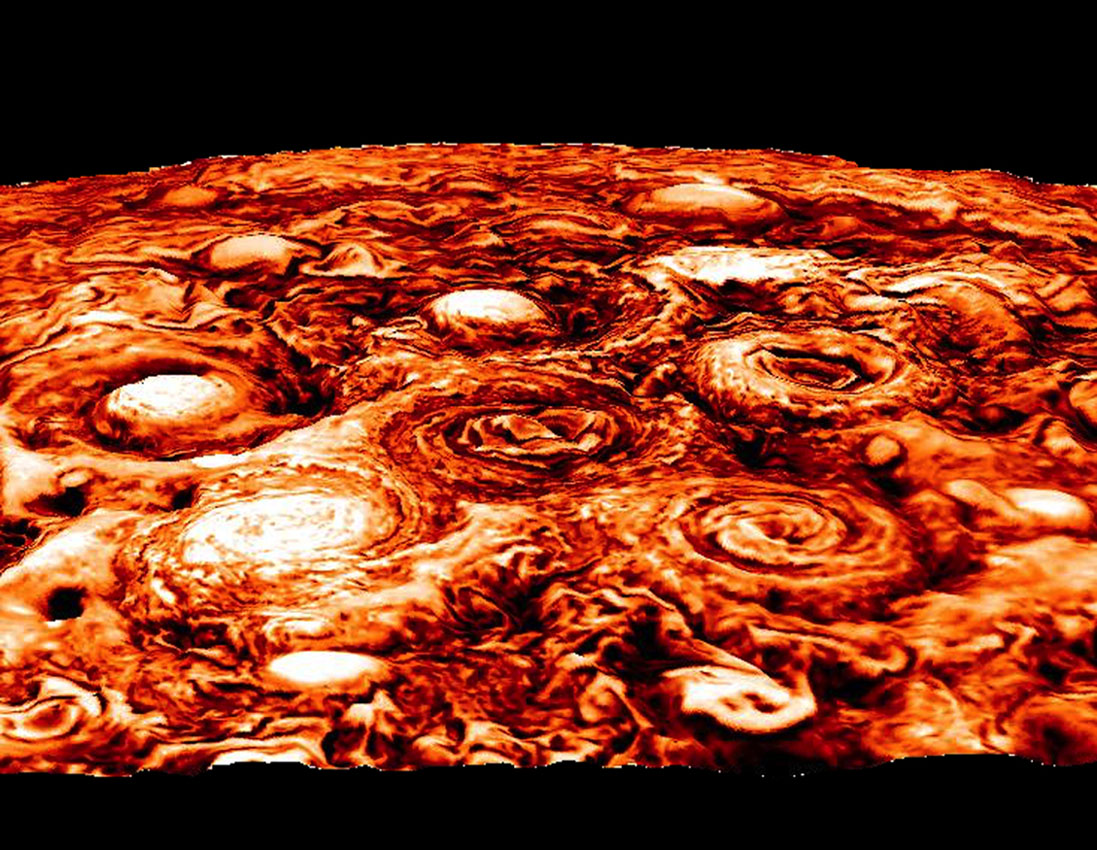
Interestingly, the cyclones remain close to each other but never seem to merge together.
Not only are Jupiter’s storms “unearthly,” so are its auroras, which are much more powerful than any here, and “defy earthly laws of physics.”
Juno had also already shown that the planet’s equatorial belts extend much farther down into the atmosphere than thought, and new gravity measurements have also now shown a north-south asymmetry.
“Juno’s measurement of Jupiter’s gravity field indicates a surprising north-south asymmetry, similar to the asymmetry observed in its zones and belts,” said Luciano Iess, Juno co-investigator from Sapienza University of Rome. The stronger the asymmetry, the deeper the jet streams are. The Jovian weather layer, from the very top to a depth of 1,900 miles (3,000 kilometers), is now estimated to contain about one percent of Jupiter’s mass (about 3 Earth masses). Earth’s atmosphere is less than one millionth the mass of the planet itself, by comparison.
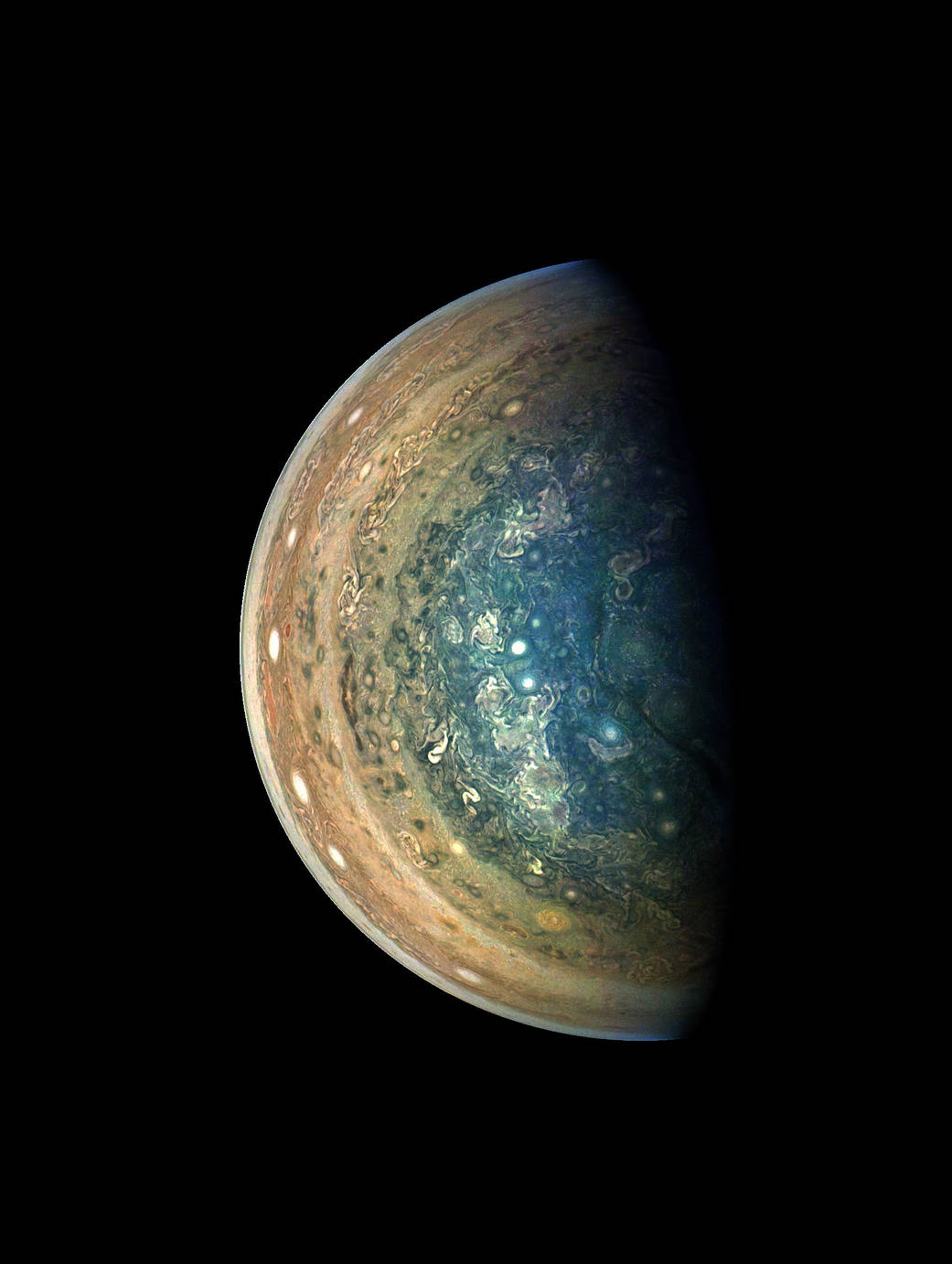
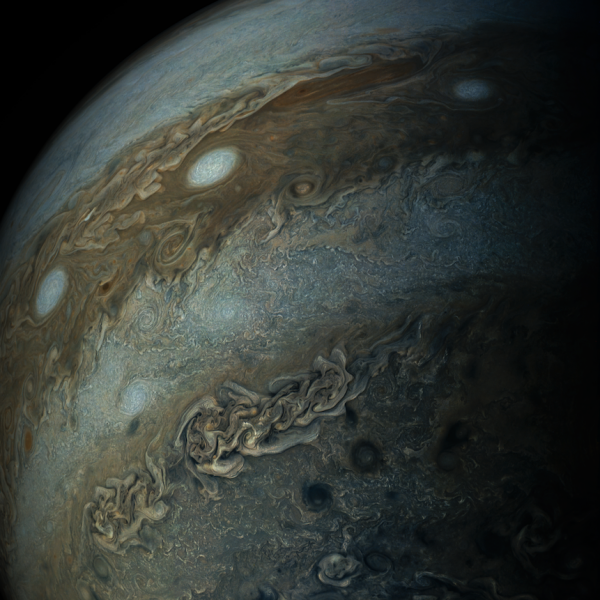
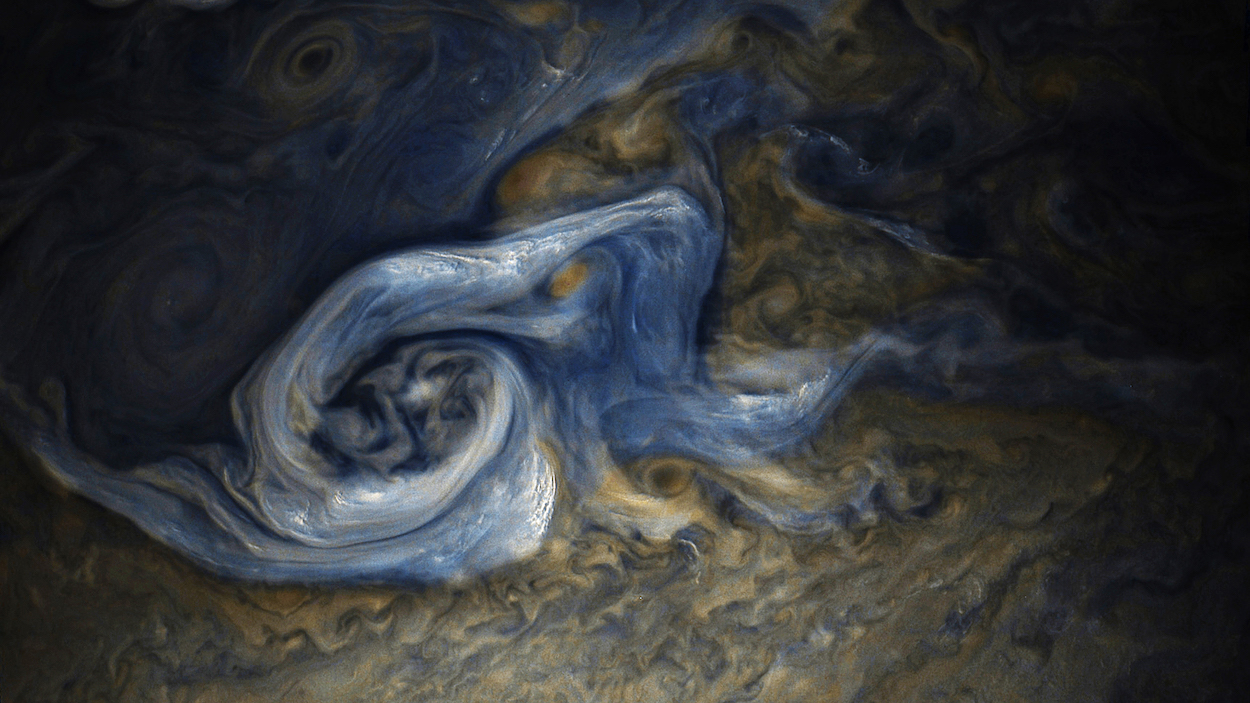
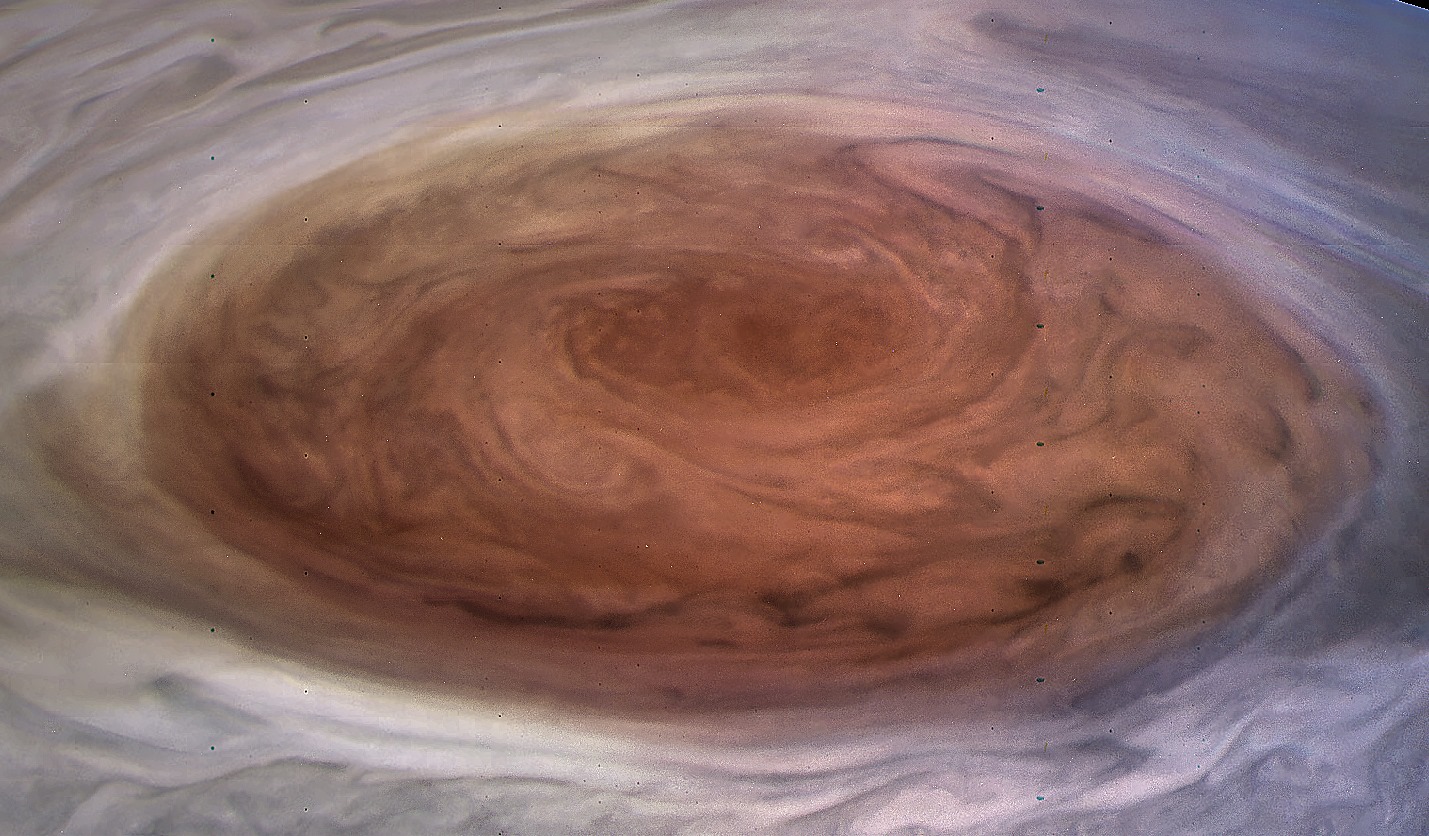
Juno also found that Jupiter rotates almost as a solid body, beneath the active weather layer.
“This is really an amazing result, and future measurements by Juno will help us understand how the transition works between the weather layer and the rigid body below,” said Tristan Guillot, a Juno co-investigator from the Université Côte d’Azur, Nice, France, and lead author of the paper on Jupiter’s deep interior. “Juno’s discovery has implications for other worlds in our solar system and beyond. Our results imply that the outer differentially-rotating region should be at least three times deeper in Saturn and shallower in massive giant planets and brown dwarf stars.”
Juno has conducted 10 science passes over Jupiter so far; the next one will be on April 1.
More information about Juno is available on the mission website.
FOLLOW AmericaSpace on Facebook!
SaveSave
SaveSave




